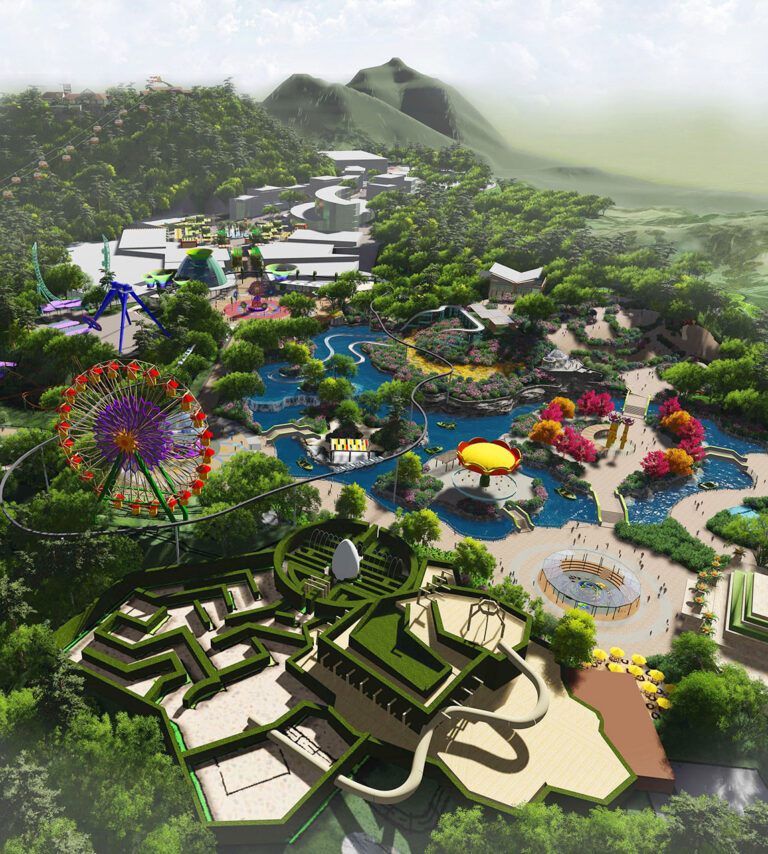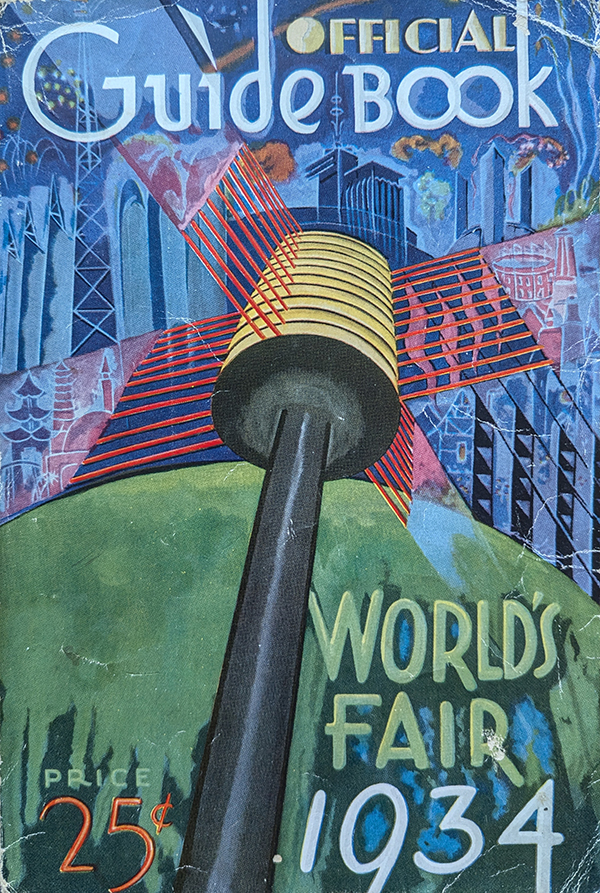Working on experience design projects and developments over the course of my career has afforded me many rewarding opportunities in terms of creativity, travel and exposure to unique experiences and talented people. And while the surprised and childlike reaction that people have when I say, ‘I’ve designed theme parks for a living’ is satisfying, I don’t think most people truly understand what that really means.
As a niche industry in the larger world of entertainment (movies & television), designing theme parks is undoubtedly a unique and fun endeavor, but it is also incredibly challenging. When you strip away the IP (intellectual property…. i.e. SpongeBob), a theme park is essentially a small town or in some cases a medium-sized ‘city’.

At its core, a theme park is a large-scale development that includes stores, restaurants, theaters, open spaces, plazas, landscaping and all the other facilities required to support the functions of an inhabited city. The whole concept of a ‘main street’ famously developed by Walt Disney for his parks sums this up perfectly.
Now that doesn’t mean that the IP/theming is just the icing on the cake though. In my experience, the stories that are created as inspiration for these unique places are woven into every aspect of the architecture, interiors and landscaping many times overtly but also as subtle ‘nods’ that guests are allowed to discover on their own. In other words, the story is ‘baked in’ to the physical environment. Understanding how to integrate and manifest those story elements into the physical construct is where the real magic happens in my opinion.
The same planning and design principles required to build a resort, an entertainment district, or revitalize a real city or town are applicable when developing a theme park project but the ‘story’ layer is the secret ingredient that gives the place or space a strong identity. Special effects, lighting, media and show production are specialty elements that are seamlessly integrated and choreographed with the physical construct in the final stages of the project. These elements help bring the place or space ‘to life’, enhance the story and create the synchronicity that guests experience on their visit.
The Influence of World Expos
Years ago, I found myself drawn to the dramatic and colorful graphic designs of early 1930’s-1940’s World’s Fair memorabilia. The modern, bold designs attracted me initially, but as I studied the era and the expos, I became intrigued by their purpose and influence. When I discovered that these epic exhibitions were an inspiration to theme park development, I was even more fascinated.
Architecture and Aesthetics
The architectural marvels displayed at these expos were nothing short of breathtaking. The Trylon and Perisphere of the 1939 New York World’s Fair, for example, captured the spirit of progress with their sleek lines and futuristic designs. These iconic structures represented a grand vision of the future and introduced the concept of immersive environments that awed and inspired visiting guests.
Innovative Technology
World expos were also hotbeds of technological innovation. The introduction of moving walkways, monorails, and immersive audio-visual experiences captivated attendees and left a lasting impression on designers. Walt Disney, known for his forward-thinking approach, incorporated similar technologies into Disneyland, from the original “People Mover” to the integration of audio-animatronics that brought stories to life. This commitment to innovation continues to shape the way theme parks engage their guests today.
Final Thoughts
The influence of world expos on theme parks is clear, and as we move through the 2000’s traditional theme parks are continuing to evolve with immersive media attractions and technology that is transforming the guest experience. New immersive experience paradigms are also continuing to pop up and be tested including Gaming/Esports experiences and Art-Based experiences (teamLab, MeowWolf, and Van Gogh/Monet experiences). The emergence of these new entertainment options is continuing to push boundaries much like some of the world expos did.
It’s easy to be enticed by the fresh, new immersive technology experiences that are competing for our attention but we are a ‘scrolling’ culture now that is more discerning and though our appetite for sophisticated entertainment seems insatiable, we will still quickly scroll by or pass on something that doesn’t grab us immediately. What keeps us from scrolling by something? Sometimes it’s a clever hook, but what keeps us there… A GOOD STORY.
We hear terms like AR (augmented reality), VR (virtual reality), XR (extended reality) and MR (mixed reality) and besides all being related to some form of ground-breaking digital technology, what word do they all have in common? REALITY. Perceived reality, approximated reality, simulated reality. These alternate realities can provide some amazing experiences, but ‘true reality’ also has the potential to be transformed into memorable places and spaces.
I understand that these new digital technologies are meant as an escape from reality, the cornerstone of leisure and entertainment, but the fact is that we all must come back to reality at some point where all our senses can be activated (sight, sound, smell, taste, touch). We may take this for granted, but I still believe that this is a great foundation to build an engaging physical experience on.
I also believe that the ‘story’ layer whether it be epic and completely immersive (theme park/digital experience) or small and subtle (a wellness resort or a historic town square) is universal no matter the level of story integration applied to the environment… real or imagined. When people interact with a place or space whose ‘design intent’ aims to tell a story, people will sense that and be drawn to it.




